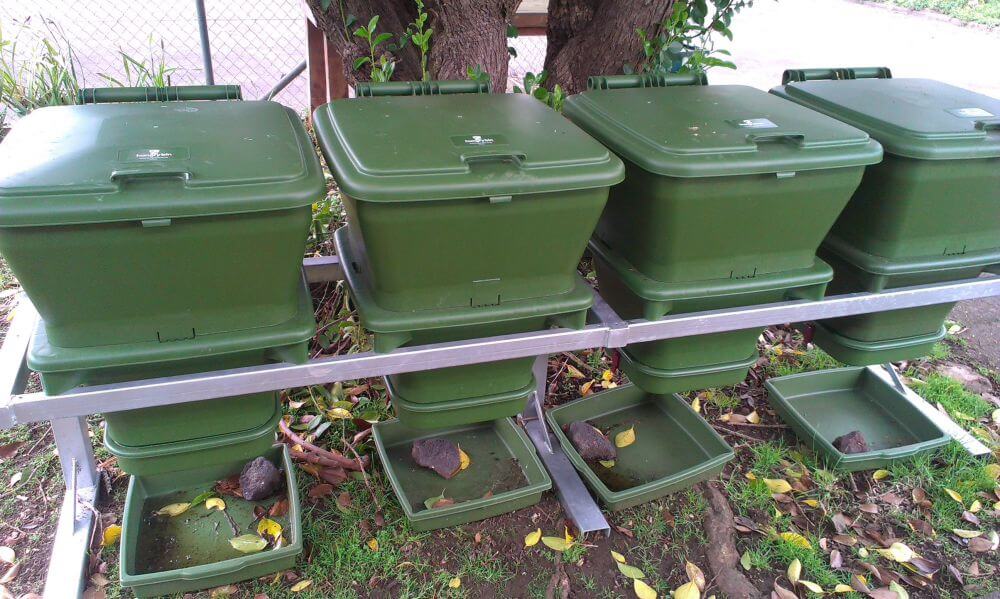Fighting the battle to reduce hospital food waste

Hospitals in South Auckland have been reducing their food waste thanks to the hard work of Debbie Wilson and the Environmental Advisory Committee.
Wilson, formerly a nurse but now the Sustainability Officer for the Counties Manukau District Health Board (CMDHB), has implemented two main initiatives at the hospitals in the South Auckland area to divert food waste from landfill – donating unused food and establishing worm farms to make fertilizer.
An environmental sustainability programme was started at the CMDHB in 2012 to measure and track the hospitals’ carbon footprint. From this programme, they found that the majority of the food waste across the South Auckland hospitals was plate scrapings. At Middlemore and Manukau hospital sites, approximately 400kg of food waste from plate scrapings is produced per day.
The issue of food waste is logistically very difficult to deal with in hospitals because so many people need feeding, and the food provided needs to be highly nutritional and fit the patients’ health requirements. At one hospital site, there are 800 beds with patients requiring three meals per day and snacks.

Debbie Wilson
Wilson said that one of the main challenges with food waste in hospitals is portion size, especially when people are not feeling well, as they may not have their usual appetite.
Addressing portion size is vital to limiting the amount of food waste from the offset, but as quantities can be very difficult to judge, using the plate scrapings in an environmentally friendly way was also important.
Establishing worm farms as a way forward
“We’ve talked about food waste within the hospital for a number of years now because we really want to divert our food waste from our hospital sites into worm farms,” said Wilson.
As a result, a number of smaller hospital sites have been set up with worm farms. Plate scrapings, food waste and home compostable packaging is put into the worm farms to make fertilizer that is used to grow fruit and vegetables on site at the hospitals. Currently, the worm farms are run by employees on a volunteer basis.
By starting at the smaller hospital sites, they have been trying to refine where the food waste goes. According to Wilson, getting food waste to commercial composting facilities is better than landfill, but the CMDHB didn’t want another ‘truck’ model with just another wheelie bin and the waste going off-site.
“If you’re just chucking it into another bin, people aren’t going to think about it and connect their behaviour to the outcome,” said Wilson.
The CMDHB wanted to change the whole way they viewed waste. By establishing worm farms it makes the food waste more valuable in that it can be used by the hospital and community to grow more food.
Currently, the hospital sites that have worm farms have kitchen caddies that food scraps are put into before being emptied into the worm farms. The plan is to eventually have organic food collection bins in all main food service areas such as the staff canteen, food retails areas and the main kitchen, where between 80-90% of the food waste is produced that will be emptied into on-site worm farms.

Debbie and Renali Narayan harvesting the worm castings.
Wilson said that the plan is to expand the small-scale model of worm farms to implement them at the bigger hospital sites like Middlemore and the Manukau SuperClinic (MSC) where food waste is greater.
The MSC has a large amount of land that neighbours Manurewa High School, which has resulted in a partnership between the school and the hospital. There is a horticultural class being taught at the school, where students are learning how to grow organic food, how to use worm farms and learning about composting . Some of the land at the MSC will be used for worm farms for processing hospital food waste and a small portion of the land will be dedicated to growing food with the castings produced by the worm farms. The ultimate goal is to create a community garden.
This relationship where the land is shared with the school is a win-win for both parties.
“We’ve got to really get actively engaged in the future generations. That’s where the power lies, in giving education and changing behaviour,” said Wilson.

Debbie Wilson with Labour MP Angie Warren-Clark who instigated the Environment Select Committee briefing into food waste that will happen in 2019.
Another food waste issue that the CMDHB has addressed was what to do with onsite catering company Wishbone’s unsold food. It was a tricky issue because the food was still fine to eat but couldn’t be used in the hospital for health and safety reasons. Wishbone was connected with a local South Auckland Christian charity who take the food and redistribute it to those in need. This partnership has now extended to Wishbone’s Auckland airport stores.
CMDHB has signed up to be zero waste to landfill by 2040 (only 22 years away), in line with the Auckland Council. They are slowly making the transition to a more circular economy; and food waste offers the most opportunities to do this.
Article by Bethany Whiteland